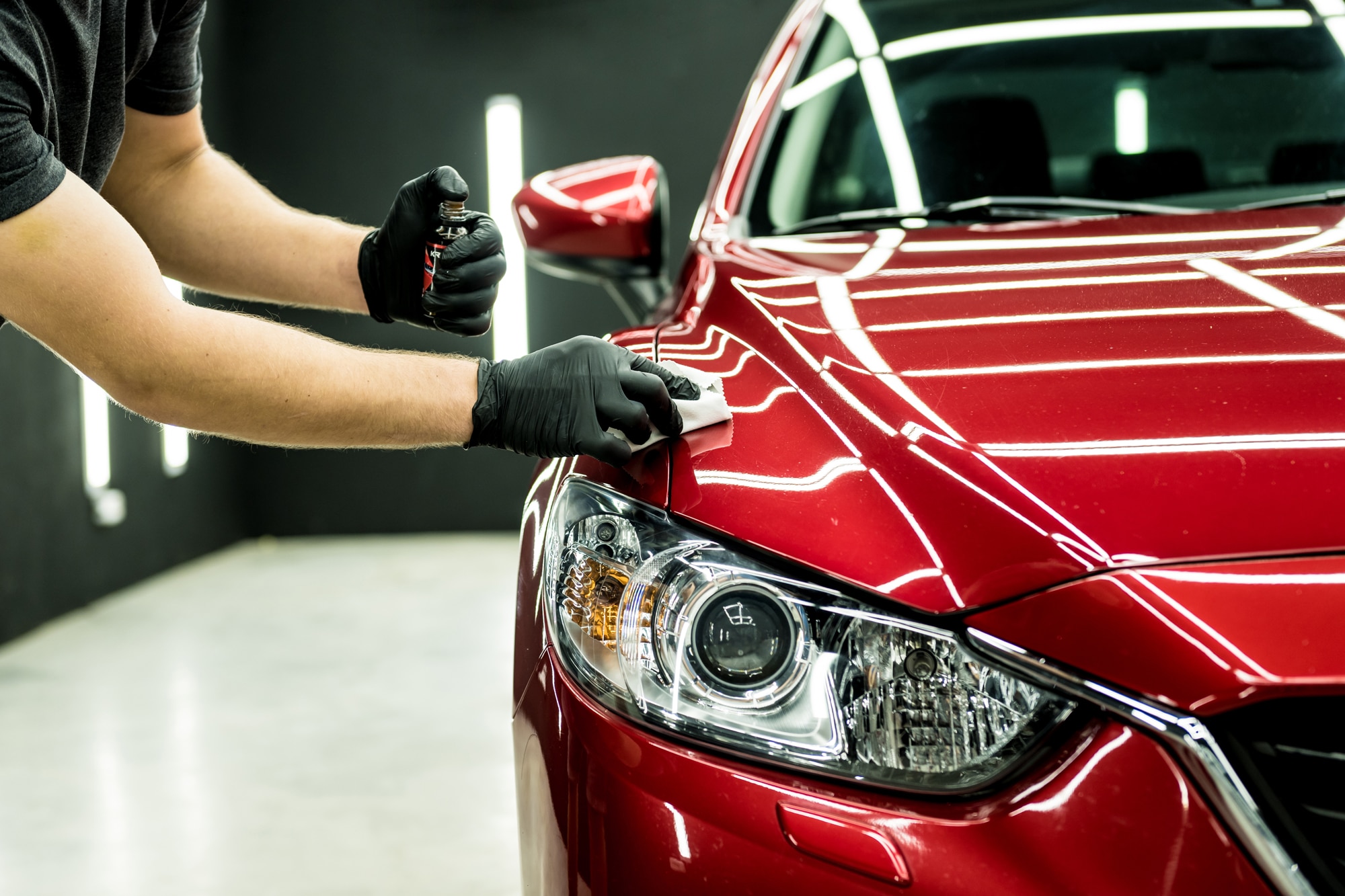Keep your car looking flawless with Curbside Detail Ceramic Coating applications.
Keep your car looking flawless with Curbside Detail Ceramic Coating applications.
Blog Article
Why Ceramic Finishing Is the most effective Choice for Resilient Shine and Sturdiness
Ceramic coating has actually become a leading solution for those seeking a resilient sparkle and improved resilience in vehicle security. Unlike traditional wax, which supplies only momentary advantages, ceramic coverings create a robust chemical bond with the surface, giving superior resistance to UV rays, contaminants, and use. This cutting-edge innovation not only raises the visual allure of a car but additionally substantially lowers maintenance needs. As we check out the subtleties of ceramic coatings, it becomes obvious why this option is progressively favored amongst car fanatics and everyday motorists alike. What aspects add to its expanding popularity?
What Is Ceramic Coating?
Ceramic finish is a fluid polymer related to the exterior surfaces of cars, functioning as a safety layer that bonds with the paint. This innovative formula creates a long lasting guard that enhances the car's look while using significant long-lasting protection. Composed primarily of silica dioxide, the finish develops a semi-permanent layer that is immune to ecological pollutants, such as dust, UV rays, and chemical spots.
The application process includes comprehensive surface preparation, which is crucial for ideal adhesion and performance. Once the surface area is tidy and polished, the ceramic coating is carefully used, normally needing multiple layers to attain the wanted level of protection and sparkle. The bonding process ensures that the coating sticks tightly to the paint, developing a barrier that is much more robust than conventional wax or sealers.
In addition, ceramic coverings provide hydrophobic homes, pushing back water and making it simpler for pollutants to slide off the surface area. This innovation not only enhances the visual appeal of cars but likewise dramatically lowers the frequency of washing and describing. As a result, ceramic finishings are increasingly acknowledged as a premium selection for vehicle treatment, providing both defense and visual enhancement.
Benefits of Ceramic Coating
The advantages of applying a ceramic finish to automobiles are significant, using both visual and useful benefits. Among the most noteworthy attributes of ceramic finishings is their remarkable hydrophobic homes, which create water to grain and roll off surfaces. This leads to minimized water spots and makes cleansing dramatically simpler, making sure that cars maintain their immaculate appearance with very little initiative.
Moreover, ceramic finishings give a robust layer of security against different environmental contaminants such as UV rays, acid rain, bird droppings, and road salt. This protection helps avoid oxidation and fading, inevitably lengthening the vehicle's paint life. Additionally, the glossy coating that ceramic finishings convey enhances the vehicle's overall visual appeal, developing a deep, reflective sparkle that is typically related to brand-new automobiles.
Ceramic coverings are likewise known for their toughness, commonly lasting numerous years with proper maintenance. This durability indicates less applications are needed compared to standard waxes or sealants, making it an economical solution in the lengthy run. On the whole, buying ceramic finishing not only boosts the aesthetic worth of a lorry but also offers enduring security versus the components.
Comparison With Traditional Wax

In terms of security, ceramic finishes supply premium resistance to ecological impurities such as UV rays, bird droppings, and tree sap, which can damage the vehicle's clear coat. Traditional wax, while it can offer a momentary safety obstacle, does not have the advanced chemical bonding homes of ceramic coatings, making it much less efficient against harsh elements.
In addition, the hydrophobic nature of ceramic coverings facilitates less complicated cleansing, as dust and gunk are much less most likely to stick to the surface. While wax might enhance luster initially, its performance diminishes promptly, leading to a less excellent appearance gradually. For those seeking durable security and visual appeals, ceramic coverings are the superior selection.
Application Process Explained
Using a ceramic finish includes a precise process that ensures optimal attachment and protection for the automobile's surface area. The initial step site is thorough cleaning, that includes washing, decontaminating, and drying the auto to get rid of dirt, oils, and any type of previous wax or sealer (Curbside Detail Ceramic Coating). This procedure typically uses clay bars to eliminate ingrained impurities
After the surface is impeccably clean, the next step is paint modification, if needed. This includes brightening the vehicle to eliminate swirl marks, scrapes, and blemishes, supplying a smooth surface for the ceramic finish to bond properly.
Once the surface area is prepped, the ceramic coating can be used. The coating is permitted to cure for a specific period, throughout which it chemically bonds with the automobile's paint.

Long-Term Upkeep Tips
Guaranteeing the durability of a ceramic layer calls for diligent long-lasting upkeep practices. Regular cleaning is crucial, ideally making use of a pH-neutral auto shampoo to stay clear of breaking down the coating (Curbside Detail Ceramic Coating). A two-bucket method is advised to reduce swirl marks and scrapes. It is essential to utilize microfiber clean mitts and towels to make certain a mild touch.
After washing, drying out the car without delay aids protect against water areas, which can cover the finish's sparkle. Consider making use of a drying aid or spray sealer specifically designed for ceramic-coated surfaces to improve protection and gloss.
Additionally, regular examinations are essential. Try to find indications of wear or contamination, such as tree sap, bird droppings, or commercial fallout. If contaminants exist, utilize a clay bar therapy to eliminate them without harming the covering.
Reapplying a ceramic finishing upkeep spray every few months can strengthen the protective layer and maintain the hydrophobic properties. Finally, avoid see this automated car cleans with brushes, as they can add to surface area damage. By adhering to these upkeep methods, you can make sure that your ceramic layer remains efficient, protecting both its shine and toughness for years ahead.
Conclusion

Report this page